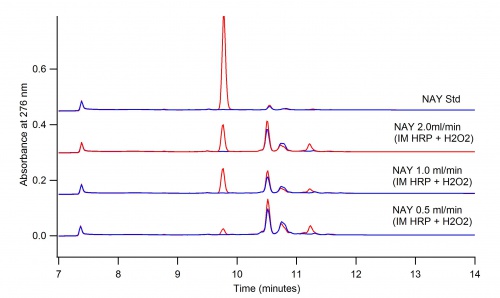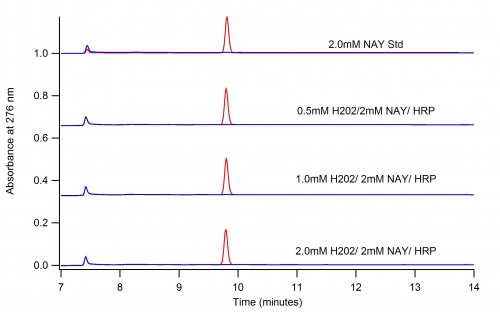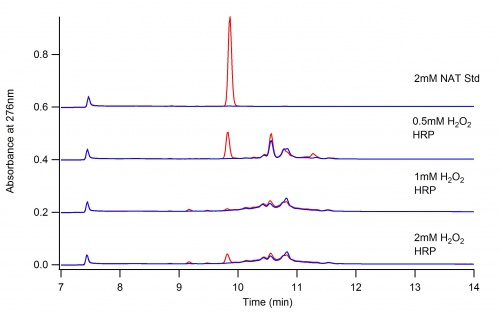N-Acetyl L-Tyrosine
This page depicts the oxidation of N-Acetyl L-Tyrosine (NAT) by Horse Radish Peroxidase (HRP)
The Dioxane Conundrum
The following two graphs depict the difference in reaction when dioxane is present and when it is not. The conclusion is that dioxane quenches the oxidation of NAT.
Beaker Reaction vs. Immobilized Enzyme Bio-Reactor
Utilizing the immobilization technique in a bio-reactor allows for the control of the rate of flow of the reaction. This makes the peaks in the products much more defined.

Figure 3: 2mM NAT oxidation without dioxane and reacted with 1mM H2O2 using the Immobilized Enzyme technique 6/9/16
Concentration Test
These graphs depict the difference in concentration of NAT and H2O2. Increasing the concentration will help to obtain more products.
Flash Chromatography
The objective of flash chromatography is to isolate peaks seen in the HPLC. Running flash chromatography allows for the product to be identified.





